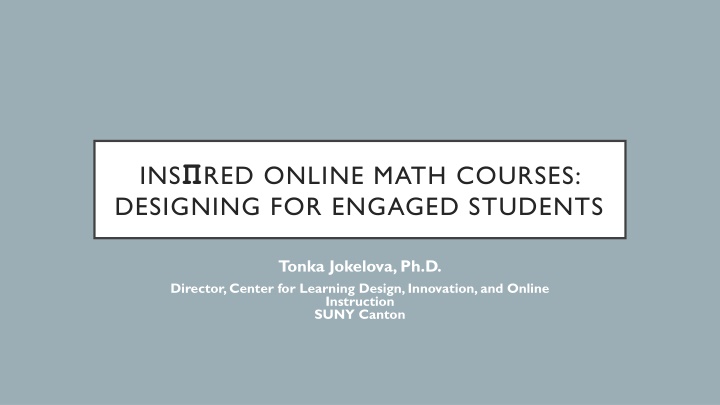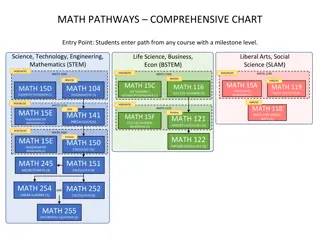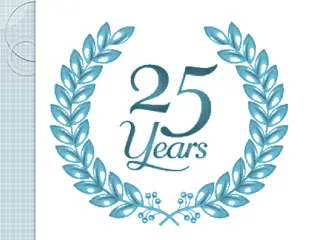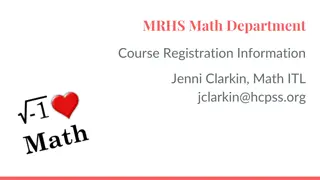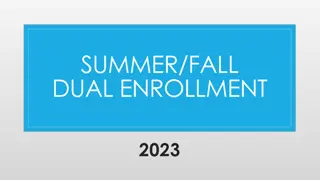Enhancing Online Math Courses for Engaged Students
Explore strategies to overcome student barriers in online math courses, discover ways to improve engagement, and create a supportive learning community. Gain insights on promoting collaboration, receiving timely feedback, and incorporating interactive activities for enhanced learning experiences.
Download Presentation

Please find below an Image/Link to download the presentation.
The content on the website is provided AS IS for your information and personal use only. It may not be sold, licensed, or shared on other websites without obtaining consent from the author.If you encounter any issues during the download, it is possible that the publisher has removed the file from their server.
You are allowed to download the files provided on this website for personal or commercial use, subject to the condition that they are used lawfully. All files are the property of their respective owners.
The content on the website is provided AS IS for your information and personal use only. It may not be sold, licensed, or shared on other websites without obtaining consent from the author.
E N D
Presentation Transcript
INSRED ONLINE MATH COURSES: DESIGNING FOR ENGAGED STUDENTS Tonka Jokelova, Ph.D. Director, Center for Learning Design, Innovation, and Online Instruction SUNY Canton
AGENDA Define student barriers Helpful considerations Practical strategies
BEFORE WE CONTINUE Please participate in this short survey: https://www.surveymonkey.com/r/C5RWFSG
I WILL NOT GIVE YOU A SOLUTION But we might talk about how to grill an egg Framework Outlook
STUDENT BARRIERS TO ONLINE LEARNING Social interaction Administrative/instructor issues Time and support for studies Learner motivation Technical problems Cost and access to the Internet Technical skills Academic skills Muilenburg & Berge (2005)
STUDENT BARRIERS TO ONLINE LEARNING DURING A PANDEMIC
STUDENT BARRIERS TO ONLINE LEARNING Social interaction Administrative/instructor issues Time and support for studies Learner motivation Technical problems Cost and access to the Internet Technical skills Academic skills Muilenburg & Berge (2005)
TO CONSIDER Collaboration and Interaction Social presence Being there Group work Approachable Discussions Caring Peer Review
BEING THERE: ENGAGEMENT AND COMMUNITY Research Tidbits the quality and timeliness of lecturer feedback was the most valued (Ragusa and Crampton, 2018) learners most valued learner-instructor engagement (Martin and Bolliger, 2018) the most engagement: Weeks 2 and 6 (out of 13) (Muir et al., 2019)
BEING THERE: ENGAGEMENT AND COMMUNITY Ungraded/Fun activities Polls Informal discussions Other activities Graded discussions Timely personalized feedback Office hours
POLLS This is a jar with some things you might need this week. Pick what you need and keep it with you for the rest of the week. BeingThere Hope Patience Wisdom Strength Love Inspiration Luck Peace Focus Perseverance
SILLY POLLS BeingThere Do you ever talk to yourself? Never! Sure do. Yes, and it s embarrassing. That s the only way I get to speak to someone intelligent. If someone weighs 99 lbs and eats 1 lb of nachos, is that person 1% nacho? Yes No Maybe, I m not sure
INFORMAL DISCUSSIONS BeingThere Advice corner What is your movie situation? How is your learning going? Anything funny happened to you lately?
APPROACHABLE No such thing as too much feedback Open yourself to be contacted + follow up
CARING Messages if lagging behind Statements expressing their success is important to you Flexibility in assignments and deadlines
COLLABORATION AND INTERACTION Group work Discussions Peer review
GROUP WORK PRINCIPLES Roles (moderator, note taker, editor, etc.) Partial deadlines Timeframe Grading
DISCUSSIONS Discussable Structured discussions online Live discussions Required notes (e.g., 6 out of 8)
PEER REVIEW peer grading scores were fairly consistent and highly similar to the instructor grading scores. (Luo, Robinson, & Park, 2014) Work like NASA
PEER REVIEW: CONSIDERATIONS Evaluation rubric 3-5 peer reviewers
NEW TEACHING: ASSUMPTIONS Less F2F More online Multi-modal instruction? Challenges Flexibility
ANCHOR IN THE TURBULENCE You know what to teach, i.e. learning outcomes
MODALITY Fully online and asynchronous Fully online, but fully synchronous Combined online Hybrid HyFlex
REFERENCES Luo, H., Robinson, A., & Park, J. (2014). Peer grading in a MOOC: Reliability, validity, and perceived effects. Online Learning Journal, 18(2). Martin, F., & Bolliger, D. U. (2018). Engagement matters: Student perceptions on the importance of engagement strategies in the online learning environment. Online Learning, 22(1), 205 222. Muilenburg, L. Y., & Berge, Z. L. (2005). Student barriers to online learning: A factor analytic study. Distance Education, 26(1), p. 29-48 Muir, T., Milthorpe, N., Stone, C., Dyment, J., Freeman, E., & Hopwood, B. (2019). Chronicling engagement: Students experience of online learning over time. Distance Education, 40(2), 262-277. Ragusa, A. T., & Crampton, A. (2018). Sense of connection, identity and academic success in distance education: Sociologically exploring online learning environments. Rural Society, 27, 125 142.
